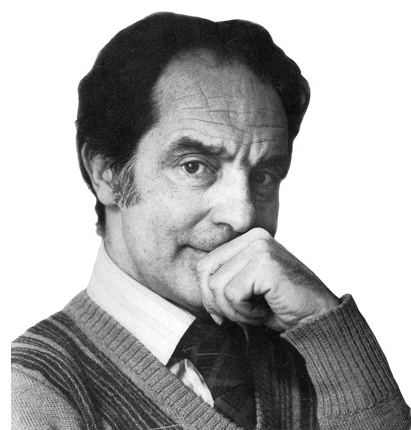
It considers the external factors that contribute to create recognizable patterns in the readings of Calvino’s texts in different contexts.
Italian Folktales, is a collection of 200 Italian folktales, published in 1956, by Italo Calvino. Calvino began the project in 1954, influenced by Vladimir Propp's Morphology of the Folktale. 001 - Dauntless Little John vannino senza paura.
Italo Calvino Influenced By Professional Roles As
It traces the influence of these aspects in the academic discourse on Calvino. The Author in Criticism also analyzes Calvino’s various professional roles as writer, editor, essayist, journalist, private correspondent, and public, cosmopolitan intellectual, reappraising their often little acknowledged importance for academic criticism. An important underlying idea is that the preconceived image that every critic has of Calvino before even opening one of his books is often solidified and repeated even in the most refined and complex critical analyses.
Metropolitan Heralds_A Italo Calvino Inspired Spatial NarrativeThis beautifully written novel is a highly imaginative satire of 18th century life and letters. One is made from ropes spanning two mountain peaks, defined by its citizens’ awareness. These cities exist in seemingly impossible forms. Seated in a lush garden, Marco Polo relates to Kublai Khan tales of the fantastical cities scattered throughout the Khan’s empire. Italo Calvino, Cities, and Modernism. In this way, this book provides insight into the reception of Calvino’s works in different countries.
It is possible though, through a deep analysis of his writings, to notice an extraordinary correspondence between the events of his personal life and what happens to the characters in his books. I was working a tedious job at my college over one summerAs a public character, Calvino has always kept a shy attitude, trying to confuse his biographical information and omitting many personal details. This attitude is not limited into his texts to particularly vivid description of places and a ambient oriented narrative, but is extended to a way of writing strictly directed by spatial logics.Art Inspired by Italo Calvino’s Invisible Cities Sometimes I like to think that Italo Calvino’s Invisible Cities saved my life, but it might be more accurate to say it saved my mind. Italo Calvino is probably the postmodernist Italian writer who most involved spatial imagination into his storytelling. Like his parents, Calvino was politically active, a communist in fascist Italy, and an active member of the anti-fascist. 15, 1923, in Havana, Cuba (hence his first name, a reminder of his origins by his Italian parents, which turned out to be not so appropriate when they all moved back to Italy).
The theme has been chosen and developed by us students, under the guidance of our tutor.We are deeply influenced by those architects and graphic designers who use drawings and images as a tool to let people imagine a different possible world. Is it something developed by you or a tutor?The work has been developed together with Ludovica Riva, my fellow graduate, and professor Davide Fabio Colaci, our tutor. On the base of these seven characters, seven spaces are thought, designed and placed in the city as independent but inseparably bound to one another, creating a symbiotic relationship able to create an actual inner habitat.The characters from Calvino’s texts become in this project actual metropolitan heralds who, just as their medieval ancestors, bring their lord’s emblem and tell his tale.First of all, the brief you pursue is truly interesting and poetic. After a process of analysis, seven characters are selected in function of their capability to represent spatial images. A urban tale of his most intimate and inner side in the form of designed space into the city.
On the other side, we appreciate the collage technique instead of the photorealistic rendering, as this allows a more poetic suggestion of the spatiality of our project without adding too much detail, which would distract from the global effect. On this side we are certainly influenced by the lightness of contemporary Japanese architects’ drawings such as Ishigami, SANAA, Atelier BowWow. On one side, there is the wireframe drawing, without post-processing but with a very careful attention to details and the total rejection of pre-made blocks.
This is particularly relevant in his Città Invisibili, but is also revealed by his ability to think and tell his tales in terms of spatial images. One other purpose is to make the observer feel part of the scene, that has no rigid frame.How could all of the images be presented as one body of work which mirrors that of Calvino? (A collection) possibly thinking back to the unwritten last memo for the next millennium?Calvino’s interiority was very concerned with spatiality. Lightness was one of the most important themes to our writer, who repeatedly mentioned it as the fundamental quality in every aspect of contemporary life.What is the effect and purpose of a circular format for certain images?The circular shape frees the observer from the constraints of the rectangular one, suggesting the existence of a 360-degree space that surrounds the depicted scene, instead of rigidly framing a certain view. In fact, these represent an innovative way of perceiving the world, which is inspired by Calvino’s novels.



 0 kommentar(er)
0 kommentar(er)
